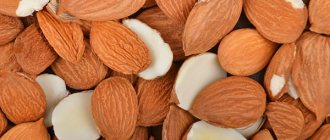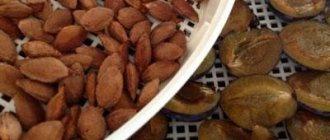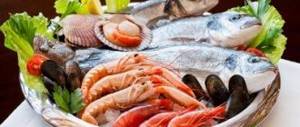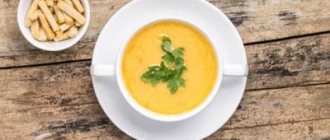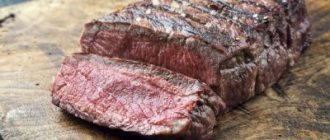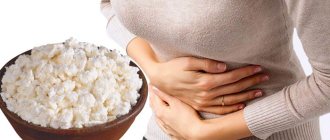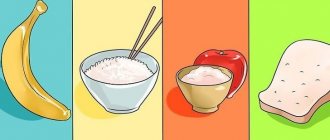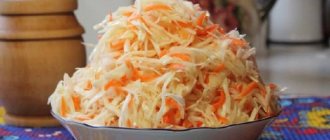All fruits are equally healthy and harmful. If you use them correctly and don’t get too carried away, then everything will be fine with you, the health, longevity and beauty of Snow White are guaranteed. But what if even the most harmless apple has a hidden threat, which (but this is not certain) defeated Snow White from the fairy tale? Why can't you eat the notorious apple seeds?
Rating: 3.67 out of 5 based on 3 votes
Apples have become not only a symbol of original sin, but also a kind of synonym for a healthy lifestyle. “Eat one apple a day and you won’t need to see a doctor,” says an old proverb that has already become a catchphrase. But we know that not everything is so simple. Like everything in our fragile universe, apples and apple seeds are equally useful and harmful. And let's find out why.
Apples themselves are incredibly healthy, tasty and help identify some problems in our body. For example, if you have a strong and sharp desire to “taste the forbidden fruit,” then there is very little iron in your body.
Almond. Harm of almonds
Almonds are considered a dry fruit and not a nut, as many people think.
It has a unique taste and is one of the most popular ingredients in preparing desserts and other dishes. The most fragrant is bitter almonds, which contain poisonous cyanide. This is why bitter almonds are usually processed to remove the poison. Additionally, heating also destroys the venom.
In some countries, such as New Zealand, the sale of bitter almonds is prohibited by law.
What is hydrocyanic acid
Hydrocyanic acid and its compounds (cyanides) are a natural insecticide, that is, a substance that protects plants from pests. The plant world is rich in them. They are found in the fruits and even leaves of many plant species. Hydrocyanic acid itself is a colorless liquid with a bitter almond odor, which can be felt at low concentrations. It has high volatility and low density, and is a highly toxic substance.
Hydrocyanic acid in pits is a natural compound. It is contained in glycosides, which are low-toxic as long as the integrity and dryness of the seeds is maintained. As soon as these conditions are violated, chemical reactions occur leading to the release of hydrocyanic acid, that is, hydrocyanic acid.
Under the influence of moisture, hydrocyanic acid is formed in the pits of cherries, plums, apricots, peaches, rowan berries, cherries, apples, black elderberries, and bitter almond kernels. All these plants belong to the Rosaceae family. It is the latter that is characterized by the presence of glycosides capable of releasing hydrocyanic acid.
Separately, it is necessary to say about grapes. It belongs to the grape family, and they do not tend to release hydrocyanic acid in the seeds. Therefore, grapes in the form of whole berries are used to make wine, which cannot be done with the listed “dangerous” fruits.
Conclusion - are apples dangerous?
Apple peel and apple pulp are very healthy and do not pose a danger to your health.
However, crushed apple seeds release small amounts of cyanide, which is highly toxic. However, for poisoning, you must eat more than 150 seeds before you experience any adverse symptoms.
So if you accidentally eat a few apple seeds, there is no need to worry.
Apples are one of the popular fruits that are enjoyed by people of all ages. In this case, you should pay attention to the bitter seeds, which are easily chewed or sometimes, if accidentally swallowed, end up in the stomach whole.
It is important to analyze the information on how beneficial or harmful apple seeds are.
Cashew nuts. Harm of cashews
Cashews are seeds, not nuts, that grow from the fruit or “apple” of the cashew.
The cashews sold in the store are not raw and are pre-steamed. This is because raw cashews contain a substance called urushiol, which can also be found in the poison ivy plant and causes allergy symptoms.
Consuming large amounts of urushiol can be fatal. Although cashew poisoning is rare, workers who peel the nut often experience unwanted side effects such as skin irritation.
Content of hydrocyanic acid in plants
How much hydrocyanic acid does the seeds contain?
The specific gravity of amygdalin, from which the toxic substance is released in the peeled seeds, is:
- bitter almonds - 2.5–3%;
- apricot - 1–1.8%;
- peach - 2–3%;
- plum - 0.96%;
- cherry - 0.82%;
- cherry - 0.8%;
- apple tree - 0.6%.
Consequently, apple seeds contain the least amount of hydrocyanic acid, so the risk of poisoning from these fruits is 4–5 times less than from bitter almonds.
Are apple seeds dangerous?
The amygdalin content in one gram of apple seeds varies in the range of 1-4 mg depending on the variety.
However, the amount of cyanide obtained from apple seeds is much less. One gram of finely ground or chewed seeds can yield up to 0.06-0.24 mg of cyanide.
Therefore, in order to get serious poisoning with a possible fatal outcome, you need to eat two glasses of apple seeds.
The exact lethal dose of apple seeds varies widely. It depends on body weight, individual sensitivity and apple variety. Keep in mind that non-fatal poisoning can occur from much smaller quantities of apple seeds.
The table below shows the lethal dose of apple seeds based on body weight.
| Body weight (kg) | Apple seeds (grams) | Apple seeds (pieces) |
| 9 | 19-529 | 27-756 |
| 54 | 113-3,175 | 162-4,536 |
| 59 | 123-3,440 | 176-4,914 |
| 64 | 132-3,704 | 189-5,292 |
| 68 | 142-3,969 | 203-5,670 |
| 73 | 151-4,234 | 216-6,048 |
| 77 | 161-4,498 | 229-6,426 |
| 82 | 170-4,763 | 243-6,804 |
| 86 | 180-5,027 | 256-7,182 |
| 91 | 189-5,292 | 270-7,560 |
Cherry. Cherry pits
Cherry, as well as apricot, peach and plum contain in their seeds
. If you chew, chew, or otherwise damage a seed, you are exposing yourself to hydrogen cyanide.
Of course, if you swallow a few seeds, nothing bad will happen, since our body can handle a certain amount of cyanide, but in large quantities it can be dangerous.
Symptoms of mild poisoning include headache, dizziness, confusion, anxiety and vomiting. In large doses, it can cause breathing difficulties, increased blood pressure and heart rate, and kidney failure, even death.
Actions in case of poisoning
At home, the first step is to induce severe vomiting , and as soon as possible, rinse the stomach repeatedly with a solution of soda (if not available, with a saturated saline, weak solution of potassium permanganate). Give massive doses of sorbents (activated carbon, Atoxil, etc.). Call an ambulance immediately. Give the victim a strong sugar solution to drink and give him sweets to eat (sugar is an antidote to cyanide).
In medical institutions they resort to:
- The prompt introduction of an antidote - Amyl nitrite, sodium nitrite or Methylene blue;
- Massive gastric lavage and, if necessary, intestinal lavage;
- Intravenous administration of glucose solution;
- Administration of drugs that improve the release and absorption of oxygen, activating the respiratory center of the brain;
- The use of drugs that accelerate the transmission of nerve impulses;
- Drugs that normalize the functioning of the cardiovascular system are introduced;
- Possible transfusion of blood components, hardware detoxification;
- Subsequent treatment according to the general condition of the patient.
Apple seeds are good for the body, but you need to eat them strictly in a certain quantity. If the recommended dose is exceeded, severe potassium cyanide poisoning may occur, requiring prompt treatment.
Lethal and toxic doses
An interesting fact is known: susceptibility to hydrocyanic acid is greater in humans and warm-blooded animals. While cold-blooded animals are less sensitive to its effects, the presence of small amounts of cyanide compounds in food is neutralized naturally without the development of poisoning.
There is an opinion that this occurs due to chemical reactions with sulfur-containing substances. When hydrocyanic acid enters the body from the same cherry seeds in a greater concentration than the protective mechanisms of neutralization can neutralize, signs of poisoning appear.
According to various sources, a fatal dose of poison or capable of causing severe poisoning can be obtained by eating 40 grams of bitter almonds, or 100 apricot kernels, or 50–60 grams of kernels containing amygdalin. In terms of pure hydrocyanic acid contained in the seeds of apples and other fruits, the lowest lethal dose is less than 1 mg/kg.
It is also important to remember that preparing wine from fruits with seeds creates a high risk of poisoning. But jam and compotes - no. If the latter contains a sufficient amount of sugar, which is an antidote to hydrocyanic acid, there will be no poisoning.
Intoxication of the body from hydrocyanic acid develops when its concentration in the blood reaches 0.24-0.97 mg/l.
How many apple seeds do you need to eat to cause death?
Consuming the seeds of one apple (the average apple contains 5 seeds) is not a cause for alarm. You can be harmed by apple seeds if you chew them and eat them in really large quantities.
Children and pets, due to their smaller size, naturally need to eat fewer seeds to become poisoned, but the risk of poisoning is still low.
Let's look at the problem from a mathematical point of view. 1 gram of apple seeds contains anywhere from 1 to 4 milligrams (mg) of amygdalin. If chewed, the same amount of apple seeds can convert into 0.06 to 0.24 mg of cyanide. The lethal dose of cyanide ranges from 0.5 to 3.5 mg/kg body weight.
As noted, the exact lethal dose of apple seeds varies widely. It depends on body weight, individual tolerance and the type of apple.
Your Health provides a table below that shows how many apple seeds you need to eat to cause death.
Apple seeds (grams)
As you can see, you really need to eat a lot of seeds to drop dead.
Negative effects of hydrocyanic acid on the body
Tissue respiration is inhibited, which is caused in the body by hydrocyanic acid formed in apricot kernels. This process occurs in all tissues and leads to energy deficiency, which adversely affects, first of all, the activity of the central nervous system, and especially the brain.
The nervous system is more sensitive to lack of “nutrition”, as a result of which the structure of nerve cells irreversibly changes. The development of starvation of nerve cells has been observed with normal oxygen levels in the blood, which is an important component of tissue respiration and plays a major role in the supply of energy molecules.
The action of the poison leads to stimulation of the release of blood cells from the spleen, which is a consequence of energy starvation of the brain. According to research results, this reaction occurs due to a direct reflex effect on the spleen. In other words, the body thinks that energy deficiency is caused by a lack of oxygen and, by stimulating the release of oxygen carriers, tries to solve the problem and restore homeostasis.
At the same time, other vital organs are still able to perform their functions. Those who died from hydrocyanic acid formed in the seeds of fruits, for example, plums, have fewer changes in the heart, liver, and kidneys, in contrast to the central nervous system. With prolonged action of the poison in the heart, oxygen deficiency also appears over time due to inhibition of enzyme systems. Similar changes occur in other organs.
Tissues lose their ability to consume oxygen. The accumulation of the latter in the blood leads to a decrease in the arteriovenous difference, and then to its disappearance. In this case, venous blood during severe poisoning will look like arterial blood.
Hydrocyanic acid is a weak acid and, at the same time, is a reactogenic substance. There are quite a lot of compounds in the body with which it can react. But since the interaction process is slow, and pathological changes due to intoxication develop faster, the toxic substance does not have time to react.
Now it is clear why hydrocyanic acid is so dangerous and what pathological processes occur during poisoning.
What conclusions can be drawn? You should not eat the kernels of fruits from the Rosaceae family. Jam, compotes, and wine must be prepared from seedless fruits. Or don’t skimp on sugar on them. The exception is wine: except for grapes, all other berries must be taken without seeds. Following simple rules will help keep you and your family healthy.
Chemical composition and nutritional value of apple seeds
Apple seeds contain many useful elements:
- vitamins of group A, B, C, E, P;
- potassium;
- calcium;
- sodium;
- iron;
- iodine - 6 grains contain as much as a person needs per day;
- acids;
- microelements;
- minerals;
- tannins.
The nutritional value of grains lies in their content of protein, sucrose and fatty oils, which make up up to 35% of the total mass.
Potato. Green potatoes
Fun fact: In the US, tomatoes are considered a vegetable, while in the rest of the world they are considered a fruit, or more accurately, a berry. The reason for this was a tax on vegetables, but not fruit.
Tomato leaves and stems contain a substance called “glycoalkaloid” that can cause extreme nervousness, headaches and stomach upset. Green tomatoes also contain some amount of this substance, but usually not much.
Potatoes are one of the most common vegetables around the world. Like tomatoes, potatoes contain glycoalkaloids in their stems and leaves. The tubers themselves are safe to eat unless they have turned green or sprouted.
Green potatoes contain solanine, which is produced when exposed to ultraviolet light.
When consuming large amounts of solanine, signs of poisoning may appear: nausea, vomiting, diarrhea, abdominal pain, and in severe cases lead to coma and even death. This is why potatoes need to be stored in a cool, dark place.
Heh from pike perch fillet with onion and soy sauce
This recipe contains the following ingredients:
- 700 g pike perch fillet;
- 100 g of ready-made “Korean” carrots;
- dec. l. ground coriander;
- dec. l. red pepper;
- 1 tsp. without a slide of sugar;
- 3 dec. l. vegetable oil;
- 2 cloves of garlic;
- 10 g cilantro;
- 1 dec. l. vinegar essence (70%);
- 2 dec. l. soy sauce.
The fillet pieces, prepared as in the previous recipe, are placed in a bowl and poured with the essence, stirred and waited for it to turn white. Then add onion half rings and chopped garlic, salt, pepper, sugar, add coriander and pour in soy sauce.
Stir and pour over hot oil to release the aroma of the seasonings. After this, add chopped cilantro and ready-made “Korean” carrots. Stir and leave for one and a half to two hours in the refrigerator.
Mushrooms. Edible and poisonous mushrooms
Mushrooms are considered a delicacy in many countries around the world where they are grown commercially. But, as you know, there is also a family of poisonous mushrooms.
Many people believe that there are telltale signs of poisonous mushrooms, such as a ring on the stem, an unpleasant odor, and bright colors. However, the only sure way to distinguish an edible mushroom from a poisonous one is to know and understand mushrooms well.
Signs of mushroom poisoning may appear after 1-2 hours, sometimes after 8-12 hours, and include abdominal pain, vomiting, nausea and diarrhea. You can also be poisoned by poorly prepared and spoiled edible mushrooms.
How to deliciously cook heh from pike perch
Fish heh is not only very tasty, but also a visually beautiful dish. It is distinguished by its piquancy and rich aroma. How to cook heh from pike perch? You can use the step-by-step recipes below with a detailed description of the cooking process. The most delicious dish comes out if the basis is predatory fish, so pike perch is the ideal solution.
Korean-style fish and carrot khe is an excellent salad and appetizer for a festive table. Thanks to its piquancy, this dish adds bright notes and enriches any meal. The recipe is different from all the others, because here the oil is heated and mixed with the fish. As a result, the dish turns out even juicier, softer, and the spices reveal their aroma and taste more fully. Required ingredients:
- pike perch fillet – 2 kg;
- vegetable oil – 150 ml;
- onions – 5 pcs.;
- carrots – 3 pcs.;
- vinegar essence 70% – 3 tbsp. l.;
- ground red and black pepper, salt - to taste.
Step-by-step process for preparing heh from pike perch:
- We wash the fish fillet, dry it, and cut it into thin strips, like noodles. Transfer to an enamel container and add three tablespoons of vinegar. Stir, cover and leave for twenty minutes.
- Peel the onion and cut into thin half rings. Remove the peel from the carrots and chop the vegetable on a grater.
- Place onions and carrots on top of the fish and add heaps of spices. The topmost one should be ground red pepper.
- Heat the oil until you see light smoke coming out. Carefully pour over the spices.
- After a couple of minutes, stir. Leave in the refrigerator for 6 hours.
By preparing pike perch according to this version of the recipe, you will get a very satisfying, rich and rich dish. Here the fish is combined with a variety of vegetables, which additionally saturate it with juices, making it very tender and soft. Required components:
- pike perch fillet – 1 kg;
- onions – 3 pcs.;
- vinegar 70% – 4 tbsp. l.;
- carrots – 1 pc.;
- garlic – 2 cloves;
- cucumber – 1 pc.;
- vegetable oil – 100 ml;
- ground red pepper, salt, coriander, fish seasoning - to taste.
Step-by-step instructions on how to prepare heh from pike perch:
- We thoroughly wash the fish fillets and dry them with paper towels. Cut into strips 1 cm thick. Salt, mix in a bowl with crushed garlic, two tablespoons of vinegar. Mix and leave for an hour and a half in the refrigerator. You can increase the marinating time to a day if you doubt the quality of the fish.
- Grind the carrots on a grater and mix with the fish. Season with red pepper, spices, coriander. Pour in the remaining vinegar. Mix thoroughly and leave for an hour and a half.
- After the fish fillet is ready, squeeze out the excess juice. Cut the onion into thin half rings and fry in oil. Cut the cucumber into strips. Mix vegetables with fish. Drizzle with a little oil, leave for an hour and serve.
In this culinary recipe for fish heh, the product does not undergo heat treatment. If you doubt the quality of seafood, marinate it for at least a day. In addition to pike perch, you can use pelengas, mullet, trout, pink salmon, pike, mackerel, sockeye salmon, catfish, carp, salmon, tuna or pollock. The following spices are used for fish heh:
- 500 g pike perch fillet;
- carrots – 2 pcs.;
- onions – 4 pcs.;
- garlic – 2 cloves;
- sweet pepper – 1 pc.;
- vinegar essence - 1 tbsp. l.;
- soy sauce - to taste;
- greens - to taste;
- sugar - to taste;
- spices.
Step-by-step recipe for pike perch heh in Korean:
- We wash the fish fillet with water, dry it with paper napkins, and cut it into thin strips, the thickness of which does not exceed a centimeter. Pour vinegar over the fish and leave for half an hour.
- Cut the carrots into thin long strips and fry in oil until soft. Salt to taste and place on top of the fish.
- In the next layer we place sweet peppers cut into thin strips and onion half rings. Pour soy sauce, sprinkle with spices, add a little sugar. Mix, put in the refrigerator for a day.
